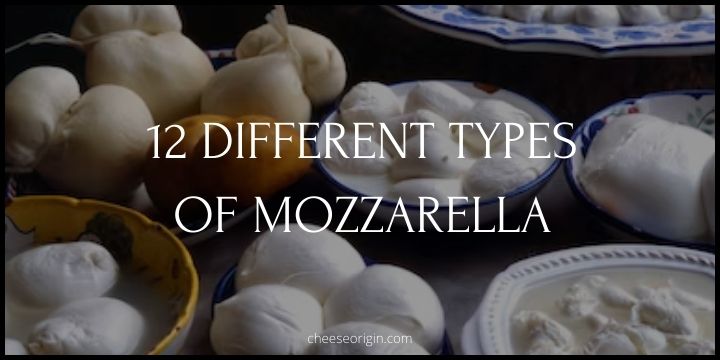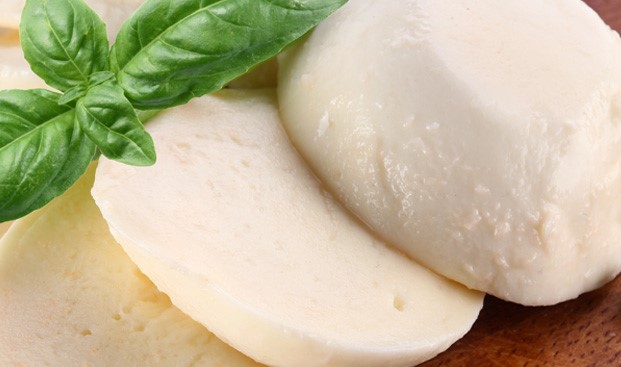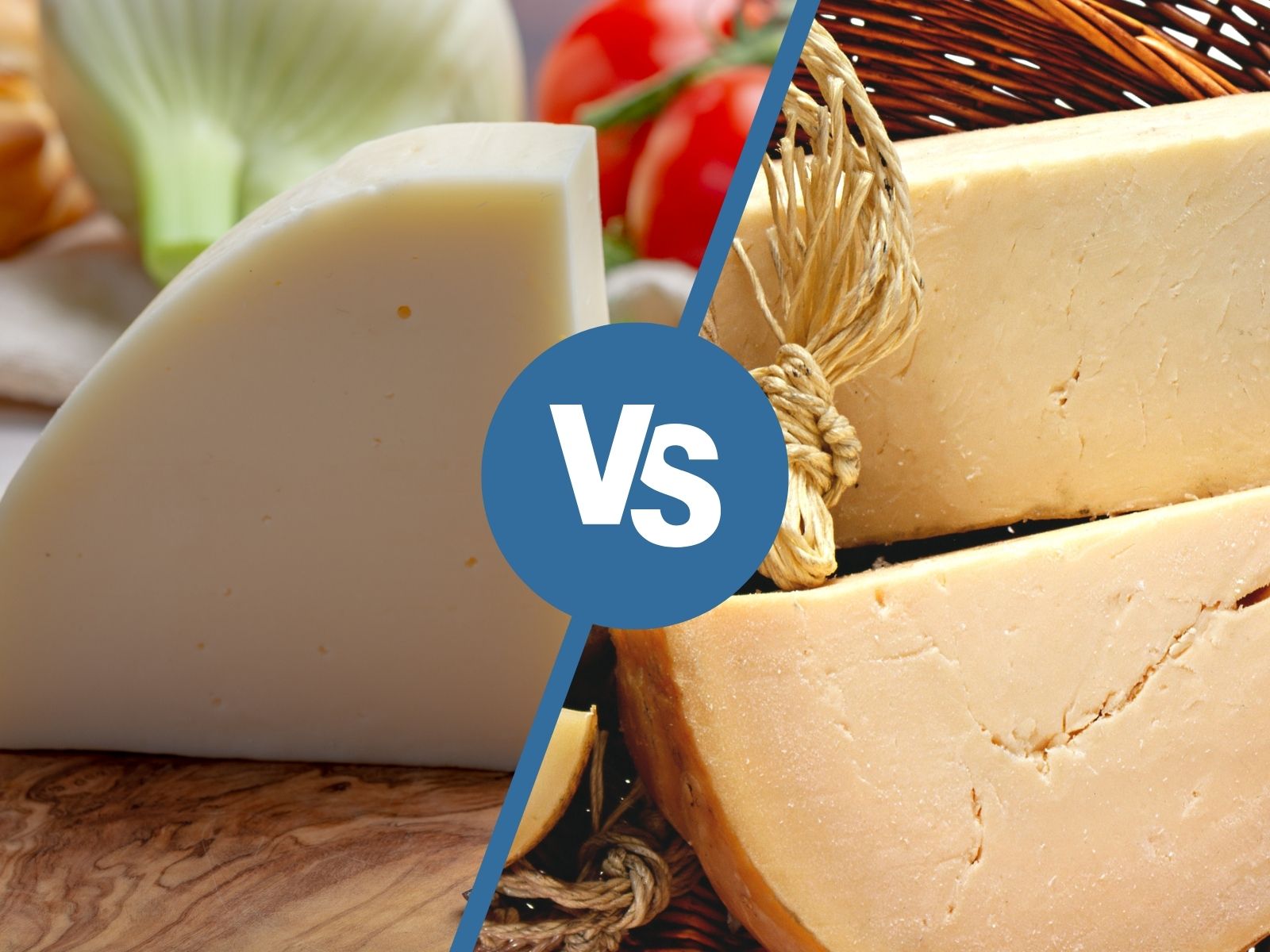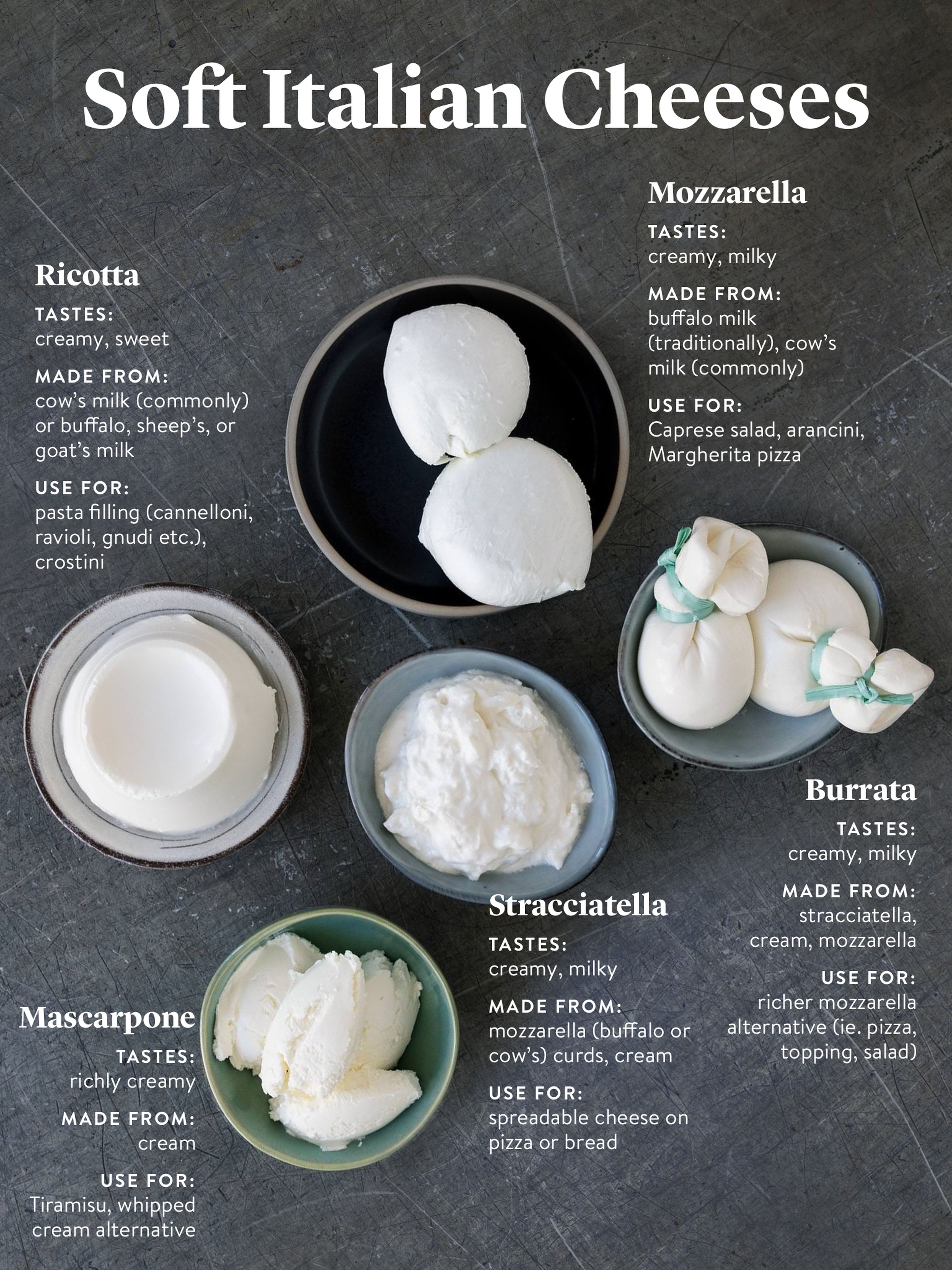Mozzarella Cheese Overview

Mozzarella cheese, known for its smooth and creamy texture, is a popular Italian cheese that has gained worldwide popularity. Made from the milk of water buffalo in its traditional form, mozzarella is also commonly made from cow’s milk. It is a fresh cheese, which means it is not aged like other varieties. Mozzarella has a mild, milky flavor and a soft, stretchy consistency that makes it ideal for melting and achieving that signature gooeyness on pizzas and in various Italian dishes. It adds a rich and indulgent touch to salads, sandwiches, and appetizers.
Mozzarella Cheese Origin And Varieties
Mozzarella cheese originated in Italy and has been a staple in Italian cuisine for centuries. It is believed to have originated in the region of Campania, near Naples, where it is traditionally made from the milk of water buffalo. However, mozzarella is now commonly made from cow’s milk as well. There are also variations of mozzarella cheese, such as fresh mozzarella, which is soft and creamy, and low-moisture mozzarella, which is firmer and great for melting. These different varieties offer versatility in cooking and allow for a range of flavor profiles to suit various dishes.
Mozzarella Cheese Culinary Uses And Popular Dishes
Mozzarella cheese is incredibly versatile in the kitchen and can be used in a variety of dishes. Its soft and melting texture makes it a popular choice for pizzas, where it forms a gooey and delicious topping. Mozzarella is also commonly used in pasta dishes, such as lasagna and stuffed shells, where it adds a creamy and comforting element. Additionally, it can be used in salads, sandwiches, and even as a topping for grilled vegetables. The mild and creamy flavor of mozzarella makes it a crowd-pleasing cheese that pairs well with a wide range of ingredients.
Provolone Cheese Overview

Provolone cheese is a semi-hard cheese that originated in southern Italy. It is made from cow’s milk and undergoes an aging process, which gives it its distinctive flavor. Provolone is known for its pale yellow color and smooth, elastic texture. It has a slightly sharp and tangy taste, with a hint of sweetness. This cheese is often used in cooking, as it melts well and adds a rich, creamy flavor to dishes. Provolone is commonly enjoyed on sandwiches, in pasta dishes, and as a topping for pizzas. It is a versatile and delicious cheese that adds a savory element to any meal.
Provolone Cheese Production Process And Aging
Provolone cheese is produced through a similar process to mozzarella using the pasta filata technique. After the curdling and stretching process, the curds are shaped into large cylindrical forms. These forms are then immersed in a brine solution to enhance the flavor and extend the cheese’s shelf life. Unlike mozzarella, provolone goes through an aging process. The shaped cheese is wrapped in wax or plastic and aged for several months. During this time, the cheese develops its distinctive sharp and tangy flavor. The aging process gives provolone its characteristic texture and makes it a versatile and flavorful cheese.
Provolone Cheese Flavor Profile And Texture
Provolone cheese offers a unique and distinct flavor profile that is both bold and tangy. It has a pronounced sharpness that intensifies as it ages, making it a popular choice for those who enjoy strong flavors. The cheese has a rich and complex taste, with notes of nuttiness and a hint of sweetness. In terms of texture, provolone cheese is firm and slightly crumbly, yet still creamy and smooth. It is this combination of flavors and textures that makes provolone a versatile cheese that can be enjoyed on its own or used in various culinary applications.
Mozzarella Vs Provolone: A Nutritional Comparison

When comparing Mozzarella and Provolone in terms of nutritional content, both cheeses offer similar benefits. They are both low in calories, making them suitable for those watching their intake. Provolone typically contains around 100-110 calories per ounce, while Mozzarella is slightly lower at 70-85 calories per ounce. Both cheeses also provide a good amount of protein and calcium, essential for maintaining strong bones and muscles. It’s important to note that the nutritional values may vary slightly depending on the brand or type of Mozzarella or Provolone cheese. So, it’s always a good idea to check the packaging for specific nutritional information.
Mozzarella Cheese Nutritional Benefits And Concerns
Mozzarella cheese offers several nutritional benefits. It is a good source of protein, which is essential for building and repairing tissues. Additionally, mozzarella provides calcium and phosphorus, which are important for maintaining strong bones. The cheese also contains vitamins such as vitamin A and vitamin B12. However, it’s important to note that mozzarella cheese can be high in saturated fat and sodium. Individuals with dietary restrictions or health concerns should consume mozzarella in moderation. Additionally, those with lactose intolerance should be cautious, as mozzarella is a dairy product.
Provolone Cheese Nutritional Composition And Health Considerations
Provolone cheese is known for its rich flavor and versatility in cooking. In terms of nutrition, it is a good source of protein, providing about 7 grams per ounce. It also contains essential vitamins and minerals such as calcium, vitamin A, and vitamin B12. However, it is important to note that provolone cheese is relatively high in sodium, with around 270 milligrams per ounce. This can be a concern for individuals watching their sodium intake. Additionally, provolone cheese is high in saturated fat, so moderation is key for those with dietary restrictions or health concerns.
Cooking With Mozzarella And Provolone

When it comes to cooking with Mozzarella and Provolone, the possibilities are endless. Both cheeses are known for their meltability, making them perfect for dishes like pizzas, lasagnas, and sandwiches. Here are a few ways to incorporate these cheeses into your culinary creations:
- Pizzas: Mozzarella is the classic choice for pizza, providing a gooey and stringy texture when melted. Provolone, with its robust flavor, adds depth and complexity to any pizza.
- Melty Sandwiches: Whether it’s a classic grilled cheese or a mouthwatering Italian sub, Mozzarella and Provolone can take your sandwich to the next level of cheesy deliciousness.
- Savory Baked Dishes: From baked ziti to stuffed shells, both Mozzarella and Provolone add a creamy and cheesy element to these satisfying baked pasta dishes.
- Appetizers and Snacks: Mozzarella sticks, caprese skewers, and fried Provolone bites are crowd-pleasing appetizers that showcase the versatility of these cheeses.
Remember to experiment with the combination of Mozzarella and Provolone in your dishes to achieve the perfect balance of flavors and meltiness. Enjoy the melty and cheesy goodness these Italian cheeses bring to your recipes.
Mozzarella Cheese Pairing And Cooking Tips
Mozzarella cheese pairs well with a variety of ingredients and can be used in various dishes. It is commonly paired with tomatoes, basil, and olive oil in a classic Caprese salad. When cooking with mozzarella, it is important to use it sparingly and not overcook it, as it can become rubbery. It is best to add mozzarella towards the end of the cooking process or simply melt it on top of dishes. Whether you are making pizza, lasagna, or a simple sandwich, mozzarella adds a creamy and melty texture that enhances the overall flavor of the dish.
Provolone Cheese Culinary Versatility And Application
Provolone cheese is known for its versatility in the culinary world, making it a popular choice for a wide range of dishes. Its smooth and creamy texture allows it to melt easily, making it perfect for sandwiches, burgers, and hot dishes like casseroles and gratins. Provolone can also be sliced and enjoyed as a snack or added to charcuterie boards. It pairs well with a variety of flavors, making it a versatile ingredient in Italian and international cuisines. Its strong and distinctive flavor adds depth to pizzas, pasta dishes, and salads. Whether melted or enjoyed as is, Provolone brings a rich and savory taste to any dish.
Mozzarella Vs Provolone: Taste And Texture

When it comes to taste and texture, Mozzarella and Provolone have noticeable differences. Mozzarella has a mild and fresh flavor with a creamy and slightly elastic texture. It is known for its soft and delicate mouthfeel. On the other hand, Provolone has a more robust and tangy flavor, sometimes with hints of smokiness. Its texture can range from semi-soft to firm, depending on the aging process. Provolone has a slight chewiness and melts beautifully, while Mozzarella is renowned for its exceptional melting capabilities. These distinctions in taste and texture contribute to the unique culinary experiences offered by both cheeses.
Mozzarella Cheese Taste And Melting Properties
Mozzarella cheese is loved for its unique taste and exceptional melting properties. It has a mild and fresh flavor that is slightly tangy and savory. The creamy and slightly elastic texture of mozzarella adds a delightful mouthfeel to dishes. When melted, mozzarella becomes wonderfully gooey and stringy, making it perfect for dishes like pizza, lasagna, and grilled cheese sandwiches. Its melting capabilities create a deliciously smooth and creamy texture that enhances the overall taste experience, making mozzarella a favorite choice for cheese enthusiasts and lovers of melted cheese dishes alike.
Provolone Cheese Flavor Intensity And Meltability
Provolone cheese is known for its bold and intense flavor. It has a sharp and tangy taste with a hint of sweetness. The flavor becomes more pronounced as the cheese ages, making aged provolone cheese even stronger and more complex. When it comes to meltability, provolone cheese is perfect for melting. It becomes smooth and creamy when heated, making it ideal for dishes like sandwiches, pizza, and French onion soup. Its ability to melt evenly and retain its flavor adds a deliciously melty and gooey element to any dish.
Conclusion

In conclusion, while both mozzarella and provolone are popular Italian cheeses, they have distinct characteristics that make them suitable for different culinary purposes. Mozzarella is known for its mild flavor and excellent melting properties, making it a favorite for pizzas and caprese salads. On the other hand, provolone offers a bold and intense flavor, perfect for dishes that call for a sharper cheese. Understanding the differences between these two cheeses allows for a more nuanced approach to cooking and ensures the right cheese is chosen for each dish. So whether it’s a gooey, melted pizza or a tangy sandwich, both mozzarella and provolone have their place in the world of Italian cuisine.
Comparison Of Mozzarella And Provolone Cheeses
When comparing mozzarella and provolone cheeses, there are several key differences to consider. Mozzarella is known for its mild and creamy flavor, while provolone offers a bolder and sharper taste. Mozzarella has a soft and elastic texture, making it ideal for melting on pizzas and in casseroles. Provolone, on the other hand, is a semi-hard cheese with a firm and sliceable texture, perfect for sandwiches and charcuterie boards. Additionally, mozzarella is typically made from buffalo or cow’s milk, while provolone is made from cow’s milk. Overall, the choice between mozzarella and provolone depends on personal preference and the desired application in cooking.
FAQ About Mozzarella Vs Provolone: Comparing Italian Cheeses
Q: What is the main difference between Mozzarella and Provolone?
A: The main difference lies in their textures and flavors. Mozzarella is a soft, fresh cheese with a mild taste and high moisture content, while Provolone is a semi-hard cheese with a sharper flavor and firmer texture.
Q: How are Mozzarella and Provolone traditionally used in Italian cuisine?
A: Mozzarella is commonly used in dishes like Caprese salad, pizza, and lasagna due to its creamy texture that melts beautifully. Provolone, on the other hand, is often sliced and added to sandwiches, eaten on its own as a snack, or used in baked dishes for its bold flavor.
Q: Which cheese is better for melting – Mozzarella or Provolone?
A: Mozzarella is known for its exceptional melting properties, making it a popular choice for dishes that require a gooey, stretchy cheese topping. Provolone can also melt, but it tends to retain its shape and develop a richer flavor when melted.
Q: Are Mozzarella and Provolone suitable for individuals with lactose intolerance?
A: Mozzarella and Provolone are both relatively low in lactose compared to other cheeses, making them easier to digest for some individuals with lactose intolerance. However, it’s best to consult with a healthcare professional if you have specific dietary concerns.
Q: Can Mozzarella and Provolone be used interchangeably in recipes?
A: While Mozzarella and Provolone have distinct flavors and textures, they can sometimes be used interchangeably depending on the recipe. Mozzarella is ideal for its creaminess and meltability, whereas Provolone adds a more robust taste and chewy texture to dishes.

Marine Bay Restaurant received the International Food Culture Award 2019 as the Best Szechuan & Hunan Restaurant, enjoying a reputation in North America. Renowned for the tunnel, authentic, and cheap. Known as “Human Taste First Garden,” 2013 Vancouver culinary first book named “Best Chuan Xiang Outlets,” significant temperature and China Eastern Airlines designated outlets.